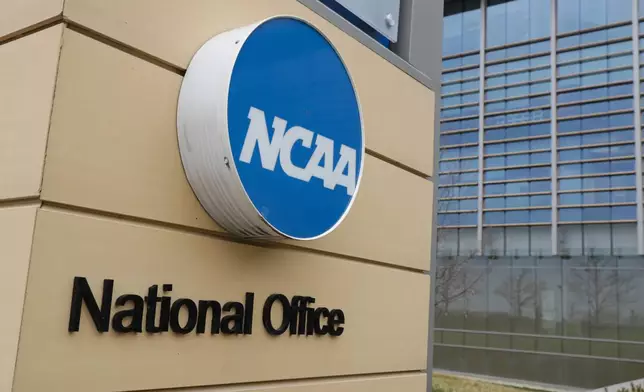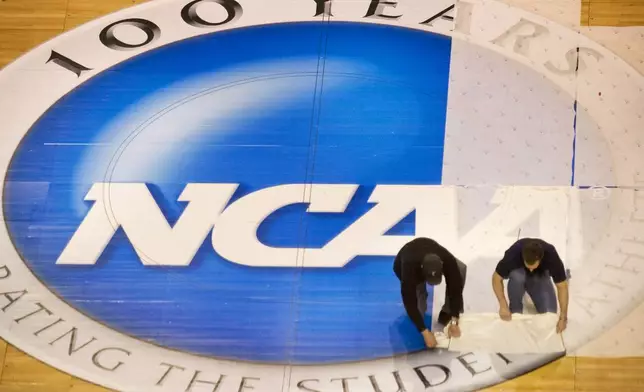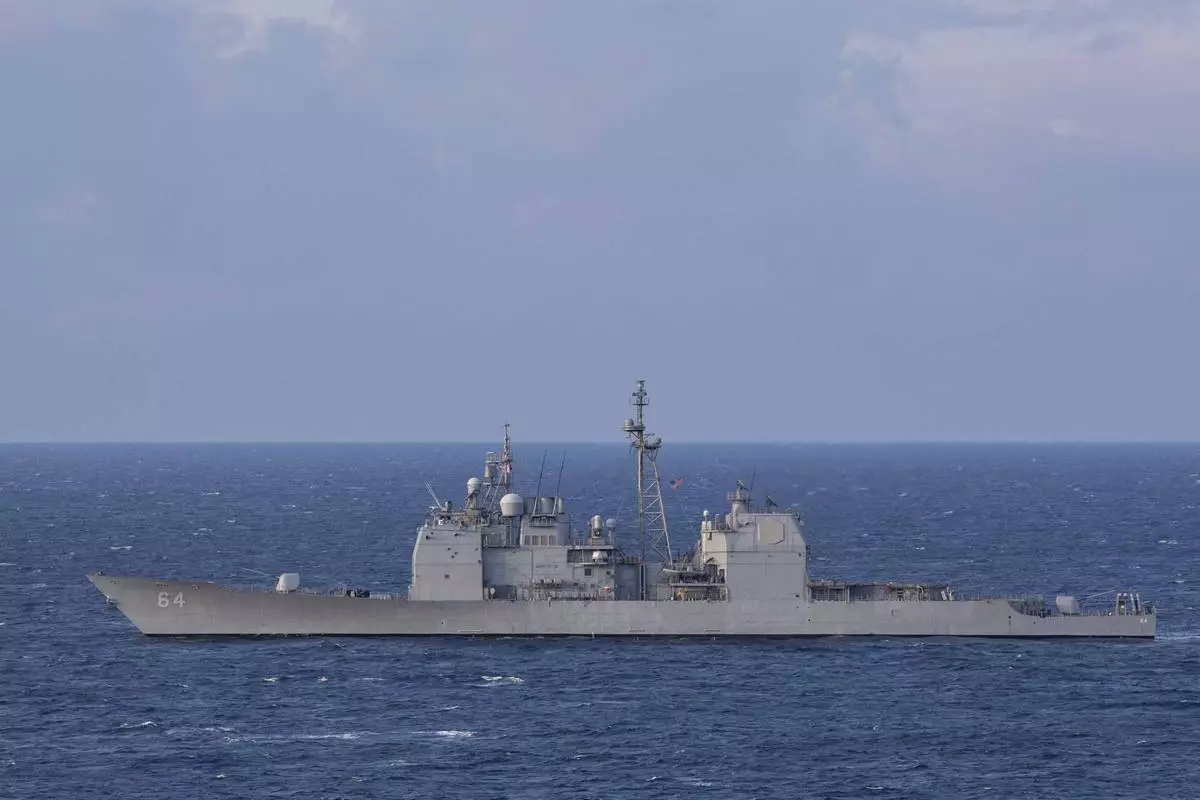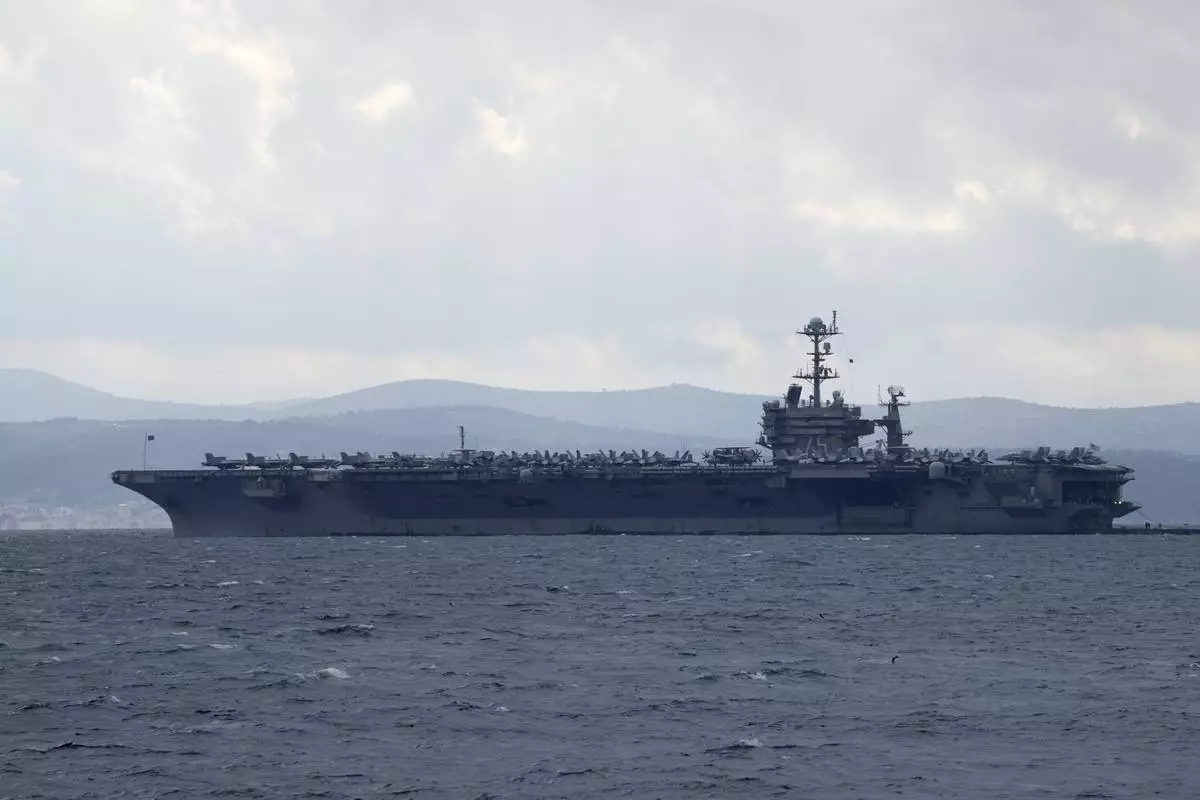When the page turns on 2024, it will be time to say goodbye, once and for all, to the amateur athlete in college sports.
In theory, the concept held on stubbornly via the quaint and now all-but-dead notion that student-athletes played only for pride, a scholarship and some meal money.
In practice, the amateurs have been disappearing for years, washed away by the steady millions, now billions, that have flowed into college athletics, mostly through football and basketball both through legitimate and illicit means.
In the coming year, the last vestiges of amateur college sports are expected to officially sputter out — the final step of a journey that has felt inevitable since 2021. That's when the Supreme Court laid the foundation for paying college players in exchange for promotions — on social media, TV, video games, you name it — featuring their name, image or likeness (NIL).
The changes have come in spasms so far, not always well thought out, not always fair and not regulated by any single entity like the NCAA or federal government, but rather by a collection of state laws, along with rules at individual schools and the leagues in which they play.
But on April 7, the day final approval is expected for the landmark, $2.8 billion lawsuit settlement that lays the foundation for players to receive money directly from their schools, what was once considered anathema to the entire concept of college sports will become the norm.
David Schnase, the NCAA’s vice president for academic and membership affairs, acknowledges that maintaining the unique essence of college sports is a challenge in the shifting landscape.
“You can use the word ‘pro,’ you can use the word ‘amateur,’ you can attach whatever moniker you want to it, but those are just labels,” Schnase said. “It’s much less about labels and more about experiences and circumstances. Circumstances are different today than they were last year and they are likely going to be different in the foreseeable future.”
Few would argue that college athletes should get something back for the billions they help produce in TV and ticket revenue, merchandise sales and the like.
But is everyone going to cash in? Are college players really getting rich?
Recent headlines suggest top quarterback recruit Bryce Underwood was lured to Michigan thanks to funding from billionaire Oracle founder Larry Ellison, and that a top basketball recruit, A.J. Dybantsa, is heading to BYU — not a hoops powerhouse — for the reported price of $7 million.
For every Underwood or Dybantsa, though, there are even more Matthew Slukas and Beau Pribulas.
Sluka's agent says his son agreed to play quarterback at UNLV after a promise of receiving $100,000 and quit three games into the season after the checks never came.
Pribula was the backup quarterback at Penn State who abruptly entered the transfer portal earlier this month, choosing the college version of free agency over a chance to play with the Nittany Lions in the College Football Playoff. He's not the only one hitting the portal in hopes of getting rich before new regulations related to the NCAA settlement take effect.
“We’ve got problems in college football,” Penn State coach James Franklin said.
The settlement will overhaul the current system. Currently, players receive money via third-party collectives that are booster-funded groups affiliated with individual schools. Coming up fast: the schools paying the athletes directly — the term often used here is “revenue sharing” — with collectives still an option, but not the only one.
“It's going to be more transparent,” said Jeff Kessler, the plaintiffs' attorney and antitrust veteran who helped shape the settlement. “If anything, having the schools handling all the payments is only going to improve the system.”
The NCAA has started collecting data about NIL payments, which date to July 2021. Its first set of numbers, which includes data from more than 140 schools across more than 40 sports in 2024, show a bracing disconnect between have and have-nots.
For instance, average earnings for football and men's and women's basketball players is nearly $38,000. But the median earning — the middle number among all the data points on the list — is only $1,328, a sign of how much the biggest contracts skew the average.
The statistics also show a vast difference in earnings between men and women, an issue that could impact schools' ability to comply with Title IX. That 1972 law requires schools to provide equal athletic scholarships and financial aid but not necessarily that they spend the same dollar amount on men and women. Heading into 2025, there is no clarity on how this issue will play out.
Regardless, the numbers are jarring. The NCAA data set shows the average earnings for women in 16 sports was $8,624, compared with $33,321 for men in 11 sports. Men,'s basketball players averaged $56,000 compared with $11,500 for women.
The biggest losers from this move toward a professional model could be all the swimmers and wrestlers and field hockey players — the athletes in the so-called non-revenue sports whose programs also happen to serve as the backbone of the U.S. Olympic team.
Only a tiny percentage of those athletes are getting rich, and now that universities have to use revenue to pay the most sought-after players in their athletic programs, there could be cuts to the smaller sports.
Also, someone's going to have backfill the revenue that will now go to the players. Well-heeled donors like Ellison are not around for every school, nor have private equity firms started sending money.
The average fan will have to pony up, and the last six months have seen dozens if not hundreds of athletic directors begging alumni for money and warning them of changes ahead. Already there are schools placing surcharges on tickets or concessions.
How will fans respond to a more transactional model of college sports?
“I don't know that fans have this really great love for the idea of 100% pure amateurism,” said Nels Popp, a University of North Carolina sports business professor. “I think what they care about is the colors and the logos and the brand. I don't know that it matters to them if the players are making a little bit of money or a lot of money. They've been making money for the last couple years, and I don't know that that's making fans really back off.”
The last time amateurism came under such assault was in the 1980s, when the Olympics unwound the final remnants of pretending the vast majority of their athletes were anything other than full-time professionals.
The transformation was tinged with a note of honesty: The people putting on the show should reap some benefits from it. Even 40 years later, there's an good argument they remain underpaid.
The contours of the same debate are shaping up in college sports.
Athletes are pushing for a players’ association that would add more transparency to a business that, even with the changes coming, is still largely dictated by the schools.
The NCAA, while acceding to the need to pay the players, wants nothing to do with turning them into actual employees of the schools they play for. It's an expensive prospect that is winding its way through the legal system via lawsuits and labor hearings that many in college sports are desperate to avoid for fear it will push the entire industry off the financial cliff.
Among the few things everyone agrees on is that things aren't going back to a time when athletes pretended to play for pride while the money moved under tables and through shadows. And that this, in fact, could only be the start, not the end, of the transformation of college sports.
“At some point, I think people might have to understand that maybe college athletes don't go to college anymore,” Popp said. “Or maybe they don't go to class during the season. There could be more radical changes, and as long as they're wearing the right logo and the right colors, I'm not sure that fans really care.”
Get poll alerts and updates on the AP Top 25 throughout the season. Sign up here. AP college football: https://apnews.com/hub/ap-top-25-college-football-poll and https://apnews.com/hub/college-football

FILE - Signage at the headquarters of the NCAA is viewed in Indianapolis, March 12, 2020. A U.S. appeals court in Philadelphia has ruled that some college athletes may qualify as employees under federal wage-and-hour laws. The court says a test should be developed to differentiate students who play college sports for fun from those whose effort "crosses the legal line into work" that benefits the school. The NCAA had hoped to have the case dismissed.(AP Photo/Michael Conroy, File)

FILE - In this image taken with a fisheye lens , basketballs sit in a rack for players to warm up before an NCAA college basketball game between Colorado and Washington State, Saturday, March 2, 2024, in Boulder, Colo. (AP Photo/David Zalubowski, File)

FILE - UNLV quarterback Matthew Sluka runs the ball against Kansas in the first half of an NCAA college football game Friday, Sept. 13, 2024, at Children's Mercy Park in Kansas City, Kan. (AP Photo/Ed Zurga, File)

FILE - Wachovia Center operations manager Jim McDonald, left, and carpenter foreman Tim Allen remove the protective film covering the NCAA logo at mid-court on the center's basketball court, Wednesday, March 15, 2006, in Philadelphia. NCAA athletes will be immediately eligible to play no matter how many times they transfer — as long as they meet academic requirements — after the association fast-tracked legislation Wednesday, April 17, 2024, to fall in line with a recent court order. (Ed Hille/The Philadelphia Inquirer via AP, File)

FILE - LSU's Olivia Dunne poses for a photo holding the trophy following the team's win in the NCAA women's gymnastics championships in Fort Worth, Texas, Saturday, April 20, 2024. (AP Photo/Tony Gutierrez, File)

FILE - Colorado head coach Deion Sanders, left, talks with quarterback Shedeur Sanders (2) during a timeout in the second half of an NCAA college football game against Central Florida, Saturday, Sept. 28, 2024, in Orlando, Fla. (AP Photo/Phelan M. Ebenhack, File)

FILE - United States' Abigail Tamer, third right, celebrates with teammates after scoring her side's first goal during the women's Group B field hockey match between the United States and Britain at the Yves-du-Manoir Stadium during the 2024 Summer Olympics, Thursday, Aug. 1, 2024, in Colombes, France. (AP Photo/Aijaz Rahi, File)




















